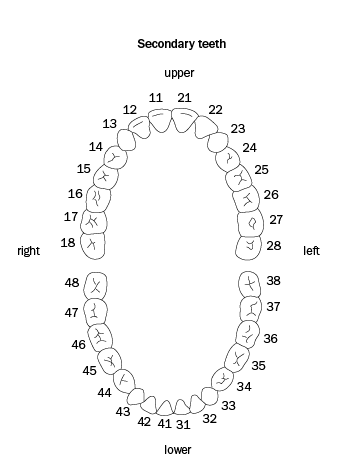Dental numbering system
There are numerous dental numbering systems to identify teeth and their maturity. The most commonly used system in Australia is the Federation Dentaire Internationale (FDI) system (see The Federation Dentaire Internationale (FDI) dental numbering system). When communicating with a dentist, identify which numbering system is being used.
The FDI numbering system divides the mouth into quadrants. The first number indicates the quadrant and whether it is a primary or secondary tooth. The second number indicates the tooth; tooth numbering begins at the central incisor and counts backward to the molars.
Using the FDI numbering system, for adults, the quadrants are numbered as:
- patient’s upper right is quadrant 1
- patient’s upper left is quadrant 2
- patient’s lower left is quadrant 3
- patient’s lower right is quadrant 4.
For primary teeth in children, the quadrants are numbered as:
- patient’s upper right is quadrant 5
- patient’s upper left is quadrant 6
- patient’s lower left is quadrant 7
- patient’s lower right is quadrant 8.


